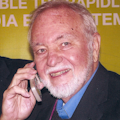Data Converters Braced For Ever-Expanding Wireless Needs
Point 1: Cell-phone basestations now handle multiple interface standards in multicarrier implementations with faster data rates. Point 2: Wireless broadband promises furious access speeds and multimedia distribution. Combine the two points, and it becomes obvious that data converters are vital to achieving successful products.
Analog-to-digital and digital-to-analog converters (ADCs and DACs) are used in a basestation's IF section. More and more, they're translating higher-frequency broadband signals into the binary code that represents the baseband signals manipulated by the DSP. Faster conversion plus greater noise and spurious performance adds up to speedier systems, and it heightens the ability to handle really broadband signals.
Data-converter manufacturers have made amazing progress over the past few years. They consistently come up with converters that outperform the previous models, while wireless systems almost universally head toward a direct-conversion, software-defined radio architecture. Now, Analog Devices adds two products that move further down this evolutionary path to higher performance.
The AD9779 Transmit DAC (TxDAC) contains two complete 16-bit, 1-Gsample/s transmit DACs. According to the company, this 0.18-mm, CMOS-switched current-source DAC is twice as fast as existing DACs. At 70 MHz, it features 88-dBc spurious free dynamic range (SFDR) and 88-dBc intermodulation distortion (IMD). Noise spectral density (NSD) is 160 dBm. Adjacent channel leakage ratio (ACLR), a key spec in CDMA systems, measures 77 dBc. And, it consumes 608 mW at 500 Msamples/s.
The AD9444 is a 14-bit pipeline ADC with a maximum sampling rate of 80 Msamples/s and a 650-MHz analog bandwidth. Its noise, spurious, and linearity specs suit it for all sorts of multicarrier 2.5G, 3G, and 4G cell-phone systems. With a 70-MHz input, the ADC has a 73.2-dBc signal-to-noise ratio (SNR) and a 97-dBc SFDR, which is the key to multicarrier broadband operation. The ADC also has 1- to 2-V p-p differential inputs and low-voltage differential-signaling outputs. It consumes 1.2 W with 5- and 3.3-V supplies.
Pre-production samples of the AD9779 are available now, with full production coming this month. It costs $27.95 in 1000-unit lots. Samples and production quantities are available now for $38, also in lots of 1000.
Analog Devices Inc.www.analog.comAbout the Author

Louis E. Frenzel
Click here to find more of Lou's articles on Electronic Design.